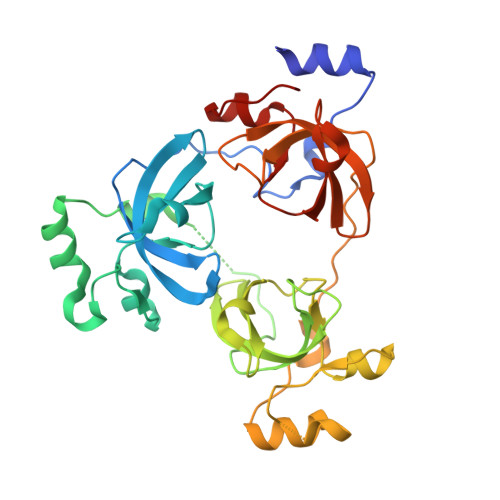The structure-activity relationships of L3MBTL3 inhibitors: flexibility of the dimer interface.
Camerino, M.A., Zhong, N., Dong, A., Dickson, B.M., James, L.I., Baughman, B.M., Norris, J.L., Kireev, D.B., Janzen, W.P., Arrowsmith, C.H., Frye, S.V.(2013) Medchemcomm 4: 1501-1507
- PubMed: 24466405
- DOI: https://doi.org/10.1039/C3MD00197K
- Primary Citation of Related Structures:
4L59 - PubMed Abstract:
We recently reported the discovery of UNC1215, a potent and selective chemical probe for the L3MBTL3 methyllysine reader domain. In this article, we describe the development of structure-activity relationships (SAR) of a second series of potent L3MBTL3 antagonists which evolved from the structure of the chemical probe UNC1215. These compounds are selective for L3MBTL3 against a panel of methyllysine reader proteins, particularly the related MBT family proteins, L3MBTL1 and MBTD1. A co-crystal structure of L3MBTL3 and one of the most potent compounds suggests that the L3MBTL3 dimer rotates about the dimer interface to accommodate ligand binding.
Organizational Affiliation:
Center for Integrative Chemical Biology and Drug Discovery, Division of Chemical Biology and Medicinal Chemistry, University of North Carolina Eshelman School of Pharmacy University of North Carolina at Chapel Hill, Chapel Hill, North Carolina, USA. ; Tel: (919) 843-5486.

















